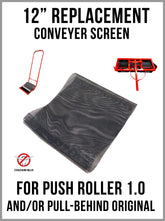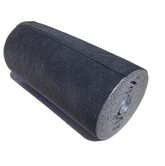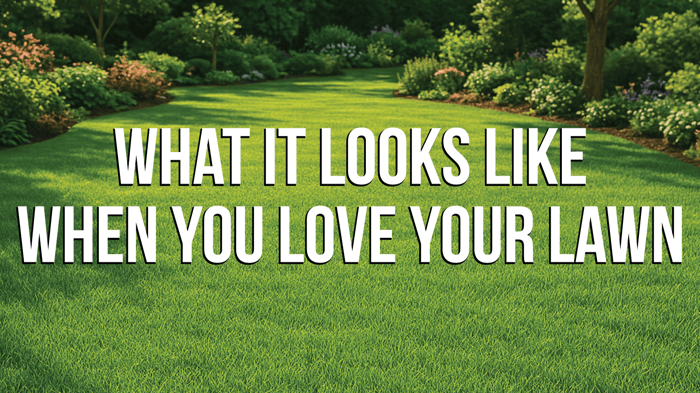The Art and Science of Lawn Care: A Guide to Green Glory
Your lawn is a lush green carpet unfurling across the earth, a healthy turf is more than just a visual delight—it’s a cornerstone of a well-maintained outdoor space. Whether framing a charming cottage garden or expanding the grandeur of a suburban backyard, this vibrant stretch of grass is both aesthetic and functional. It elevates property value, enhances curb appeal, and provides a serene space for relaxation, gatherings, and play.
But achieving and maintaining such vibrant greenery requires more than just occasional mowing. Behind every thriving patch of grass lies a thoughtful regimen of care, attention, and well-timed techniques. A properly cultivated yard becomes the canvas for other elements like ornamental shrubs, flowering borders, specimen trees, and perennial beds to flourish in harmony. And when you understand the foundational practices of care and maintenance, that green glory becomes surprisingly easy to achieve.
Let’s explore the essential components of turf care and the time-tested methods that lead to thriving, weed-free, and vibrant green spaces.
The Importance of a Well-Maintained Yard
There’s a reason homeowners and landscape designers place so much emphasis on that emerald patch of land. A meticulously groomed green space accounts for nearly 75% of a garden’s visual appeal. More than just eye candy, this greenery adds functionality—serving as soft ground for walking, playing, or hosting outdoor events. In residential spaces, it acts as a cooling buffer, absorbing sunlight and reducing ambient temperature. It also helps control erosion, manage water runoff, and even supports biodiversity by providing habitat for insects, birds, and small creatures.
But without consistent upkeep, this vibrant space can quickly turn into a tangled mess. Poor maintenance invites weeds, pests, thatch buildup, and unhealthy soil conditions. The transformation from green elegance to overgrown chaos can happen faster than expected.
If you're struggling to keep your outdoor space in pristine condition, Sticker Burr Roller offers effective and affordable solutions to tackle persistent nuisances like sticker burrs and grass burrs. Their professional tools and expertise make maintaining a clean, soft yard easier than ever.
1. Weed Control: Your First Line of Defense
Weeds are opportunistic invaders, and without proactive removal, they can quickly dominate your lawn. Their presence not only affects the appearance but also compromises soil health and water absorption. If left unattended, they create coarser textures and compete with your desired grass for nutrients and sunlight.
Make it a habit to remove weeds regularly, roots and all. Avoid allowing them to flower or seed. Consistency is key—one seed left behind can quickly spread across the entire yard.
2. Rolling: Leveling and Root Strengthening
Rolling is a technique used to encourage root establishment and to maintain a smooth surface. This practice is especially important after weeding or reseeding, as it ensures the soil is compact enough to support new growth while keeping the terrain level.
Use a lightweight roller in dry conditions, ideally on sandy soil. Avoid rolling when the ground is wet—it can lead to compacted soil, which prevents roots from breathing. Select a roller size that suits your garden dimensions and apply even pressure as you roll your lawn.
3. Mowing: Timing and Technique Matter
Mowing your lawn is more than just cutting grass short—it’s a science. The frequency and height of cuts should be based on seasonal growth. During active growing seasons (spring and early summer), weekly mowing may be necessary. In cooler months, you can cut back on frequency.
Avoid letting grass grow beyond 5 to 6 cm. Taller grass might appear lush, but it quickly becomes vulnerable to pests, fungal infections, and uneven drying. Always use a sharp mower blade to avoid tearing the grass, which can stress the plant.
Uniformity is everything. Choose a reliable mower with adjustable height settings to give your lawn that clean, professional look.
4. Sweeping and Cleaning Up
After mowing, don’t skip the clean-up. Grass clippings left on the surface can smother healthy blades and lead to the formation of a dense thatch layer. A quick sweep using a rake or blower removes debris and keeps everything neat. In autumn, this step becomes even more crucial as fallen leaves can trap moisture and harbor mold or mildew.
A daily morning sweep also helps remove dew, light debris, or anything tracked in by pets or wind—keeping the area inviting and clean.
5. Smart Watering: Less is More
When it comes to hydration, consistency trumps intensity. Shallow but frequent watering encourages roots to stay near the surface, whereas occasional deep watering fosters deeper root growth—making the grass more drought-resistant.
In winter, morning dew acts as a natural irrigation source. You can lightly run a hose over the blades before sunrise to enhance moisture absorption. During dry seasons or in large spaces, consider installing sprinkler systems. These offer timed and even distribution, saving labor and conserving water when programmed efficiently.
6. Raking and Scraping: Reviving Tired Turf
Older patches often develop a crusty, matted texture at their base, which blocks airflow and nutrient absorption. When that happens, it’s time to scrape and rake.
Use a sickle in the spring months (April or May) to gently scrape away hardened material at ground level. Follow this with vigorous raking in two directions to dislodge old runners, stimulate new growth, and aerate the soil. It’s a physically demanding but rewarding task that gives the turf a fresh start.
7. Top Dressing: Feed the Soil, Feed the Green
Top dressing is like giving your lawn a multivitamin. After you’ve scraped and raked, apply a nourishing mixture made of gritty sand, cow dung compost, and high-quality garden soil in a 1:2:1 ratio. Spread it about 3–5 cm deep across the surface. This enriches the soil, improves drainage, and encourages robust root development.
Plan your top dressing just before the monsoon or rainy season. For reference, you'll need around 100 kg of this mix per 100 square meters. It’s labor-intensive, but the payoff is undeniable—a lush, soft, resilient yard that looks and feels fantastic.
Bonus Tip: Seasonal Maintenance
Each season brings its own set of challenges. Spring calls for aeration and weed control. Summer demands hydration and pest prevention. Autumn is perfect for reseeding bare patches, while winter is the time for rest and minimal disturbance.
Create a simple seasonal calendar with reminders for mowing, fertilizing, watering, and weeding. When you stay ahead of nature’s curve, your green space becomes more than just a backdrop—it becomes a living, breathing part of your home.
Conclusion
There’s a sense of pride and joy in walking barefoot across a healthy, vibrant patch of green. Beyond aesthetics, this well-maintained landscape improves mental health, creates a welcoming space for guests, and supports the ecosystem in subtle yet powerful ways.
By mastering a few simple practices—like weed control, timely mowing, proper watering, and soil nourishment—you can transform your outdoor space into something truly extraordinary.
For help with the tough stuff, especially tackling pesky burrs that ruin the barefoot experience, turn to Sticker Burr Roller. Their tools are designed to remove stickers without damaging the grass, giving you the barefoot luxury your yard deserves.
When you put love and care into your outdoor space, it rewards you tenfold. So roll up your sleeves, grab your rake, and let your landscape tell a story of care, intention, and green excellence.
www.StickerBurrRoller.com









